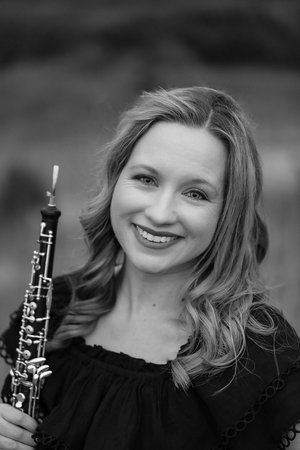
About the Piece
Instrumentation: Solo English Horn, 1001-2000, 2perc, Pno, Strings
Duration: 15 min
Program Note:
Chrysalis is the musical analogy of a caterpillar; it’s metamorphosis, and becoming a butterfly. Within the story is another message: to become spiritually changed.
The first movement, Caterpillar, introduces the “caterpillar theme” that will transform throughout the piece. This melody begins with great clarity and is transformed into an awkward, crawling caterpillar. The theme returns with serenity once again at the end of the movement.
In movement two, the caterpillar enters a new and unknown phase of progression. In the beginning, the caterpillar is fearful of the challenge it will be to make this great change. The caterpillar struggles to find its way. But in the darkness of the chrysalis, the caterpillar finds hope and the strength to become something more. Within the Chrysalis attempts to capture my personal feelings regarding the sacrifice and death of Jesus Christ. There are moments of quiet grief, deep sadness and anguish, and then gratitude and hope. The caterpillar changes within the chrysalis, just as one can experience a spiritual rebirth through Christ’s great gift.
In the third movement, the Butterfly emerges. The “caterpillar theme” is transformed. The butterfly sings praises to God, who gave her wings to fly. All Creatures of Our God and King is quoted:”
“All Creatures of Our God and King
Lift up your voice and with us sing…
Oh, Praise Him! …Alleluia!”
Conductor’s Perspective
The writing and the harmonic language of this work is quite conservative, and therefore not so difficult for the orchestra to understand and grasp the concept. The mixed meter is quite repetitive, and once musicians understand the feel of the pulse, it’s not too challenging.
The piano part is quite extensive, so a good pianist is needed for the performance. There aren’t many orchestral works featuring an English Horn solo, so this is a nice way to feature a faculty member as a collaboration.
This version was premiered with single strings but I’ve done it with the entire orchestral string section – it could work and just note the balance in a few spots.
About the Composer
Alyssa Morris has delighted audiences around the world with her “exceptional” and “soulful” musicianship (Fanfare.) American Record Guide describes her playing as “stunning,” exhibiting “unmistakable…virtuosity.” Alyssa serves as Assistant Professor of Oboe and Music Theory at Kansas State University, and as the principal oboist of the Topeka Symphony Orchestra and Wichita Grand Opera. She has appeared as a soloist in venues throughout the United States, Scandinavia, the British Isles, and Western Europe. She performed as a concerto soloist at the Kennedy Center, and with the Topeka Symphony in a performance of her original concerto Dreamscape. Alyssa was a recitalist at the 2014, 2016, and 2018 International Double Reed Conventions in New York City, Columbus, Georgia, and Granada, Spain, and a featured performer at the 2021 Virtual International Double Reed Symposium. Alyssa has been a featured performer and composer on National Public Radio’s program “Performance Today,” and live on Kansas Public Radio’s program “Classical Music in the Morning.”
Full Bio on the Official Website: http://www.alyssamorrismusic.com/bio
Performance Materials
Instrumentation: Solo English Horn, 1001-2000, 2perc, Pno, Strings
Duration: 15 min
Performance materials and parts can be obtained by contacting the composer
Perusal Score (third movement only)
Recording
Recording on YouTube by the Schwob Contemporary Ensemble with English Horn solo by Susan Tomkiewicz conducted by Paul Hostetter